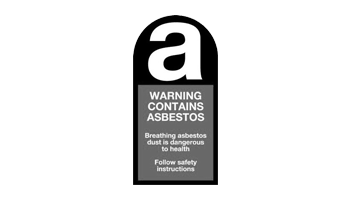Why Amicus?
We listen
We listen, we discuss, we advise. Alright, it’s fairly obvious but we listen to your requirements and objectives and offer you the best advice to suit your needs.
We value our customers and know that each one is different. This is why we provide you with specialist advice in accordance with all relevant HSE publications.
Experience
We bring an array of knowledge, expertise and leadership through the people who create us. Amicus Environmental has vast industry experience, using a combination of extensive practical knowledge and an in-depth understanding of regulation leave us uniquely qualified to co-ordinate and manage your project through to completion.
Passionate
We treat every client as our highest priority. We know how important service and support excellence is and we know how much our clients expect it. We care about our projects and can often be found going the extra mile to ensure everything ‘ is just right’!
Technical
Whether it’s asbestos surveying and sampling or asbestos removal through to demolition soft strip we are proud of our highly qualified directly employed staff. We make life easy for customers.
Our skills and experience leave us uniquely qualified to co-ordinate and manage the implementation of your solution.
Working for Amicus
We are an enthusiastic team looking for like-minded individuals to join our expanding and progressive business within the Asbestos/Environmental Remediation industries. Please see our latest vacancies below.
Introduction We are pleased to announce that an exciting opportunity has arisen within our growing business for an Asbestos Surveying Manager to work within our highly skilled and motivated team. The successful candidate would be enthusiastic and conscientious with knowledge and experience of working within this role and…
view job detailsLocation: Witney, OX29 6TJ Position: Permanent, Full Time About Us Using a combination of extensive practical knowledge and an in-depth understanding of regulation Amicus Environmental Limited has extensive industry experience, this leaves us uniquely qualified to co-ordinate and manage asbestos projects from identification through to licensed removal. We…
view job detailsAsbestos Facts FAQ's
- What is asbestos?
Asbestos is a naturally occurring mineral found in rock formations. Mining of the rocks is undertaken and then the minerals which appear as long, flexible fibres are removed to be used within building materials.
- How many types of asbestos are there?
There are six unique types of asbestos which all have their own individual characteristics.
The three main types of asbestos are:
Chrysotile (White asbestos)
Crocidolite (Blue asbestos)
Amosite (Brown asbestos)
The lesser known and less commonly used types of asbestos are:
Tremolite
Actinolite
Anthophyllite
- What does asbestos look like?
Asbestos is a beautiful but very deadly material. In its natural form asbestos fibres look like other common fibres but due to their composition they are very harmful to the human body. Pictured here is Chrysotile (under polarised light microscopy) asbestos in its natural form, but remember, asbestos was extracted and bonded with other building materials such as cement, vinyl and other composites to form asbestos containing materials so therefore it would not look like this in building products.

- What is asbestos used for?
Asbestos is heat and flame resistant, strong and cost effective, and has many uses and was used widely within the building industry. It can be mixed with cement for roofing and flooring. It is also used to insulate pipes and ceilings, and to make brake shoes and pads.
- Is asbestos still used?
Not in the UK but it is used in other parts of the world. It is banned in more than 20 countries but It is still used, in limited quantities, in the US and Canada. The biggest consumers, by far, are China, India and Russia. The main exporters are Russia, Kazakhstan, Brazil and Canada.
It has been banned in the UK over a series of years starting from 1985 where Crocidolite and Amosite asbestos was banned initially. Years later (1992) some uses of Chrysotile asbestos was also banned and then a complete ban with no exceptions was introduced in 1999.
- Is asbestos dangerous?
Asbestos causes over 4500 deaths every year. Younger people, if routinely exposed to asbestos over time, are at greater risk of developing asbestos-related disease than older workers. This is due to the time it takes for the body to develop symptoms after exposure to asbestos (latency). Exposure to asbestos can cause four main diseases:
- Mesothelioma (a cancer of the lining of the lungs; it is always fatal and is almost exclusively caused by exposure to asbestos)
- Asbestos-related lung cancer (which is almost always fatal)
- Asbestosis (a scarring of the lungs which is not always fatal but can be a very debilitating disease, greatly affecting quality of life)
- Diffuse pleural thickening (a thickening of the membrane surrounding the lungs which can restrict lung expansion leading to breathlessness.)
It can take anywhere between 15-60 years for any symptoms to develop after exposure.
- What is asbestos legislation?
Asbestos legislation is fairly vast and complex. It is contained within the Health and Safety at Work Act 1974 which also has separate legislation pertaining to asbestos alone.
This is the Control of asbestos Regulations 2012 whereby all asbestos related legislation is documented. Furthermore asbestos legislation is split into Approved Codes of Practices (ACOPs) and guidance documents.
For instance asbestos surveying and management is covered within the Control of Asbestos Regulations 2012 (Regulation 4 & 5) but has a separate guidance document (HSG264 Asbestos: The Survey Guide) which is in depth guidance specific to asbestos surveying and management.
- As a homeowner, how does legislation affect me?
If your property was built prior to 1999, asbestos may be present in some form or another. Asbestos legislation does not necessarily apply to you in your own home so long as you are not endangering anybody or putting the personal health of others at risk.
If however, you are employing others to work in your home, then asbestos legislation would be applied. As a homeowner you should ensure that those people you are employing to work in your home are aware of any asbestos and that control measures are in place so that it is not disturbed or it is removed correctly prior to any work.
Generally, the contractor that you are employing should be aware of the law and they should be ensuring that they are complying with the legislation. As a homeowner it may be wise to ensure the contractor you are employing is aware of the law prior to employing them.
- As an employer, how does legislation affect me?
Asbestos legislation will always apply to you. As an employer you are required to ensure, so far as is reasonably practicable, the health, safety and welfare at work of all employees. There are 3 specific regulations that would apply to you as an employer:
The Control of Asbestos Regulations 2012 (Regulation 4) Duty to manage asbestos in non-domestic premises.
Which states, the duty holder must ensure that a suitable and sufficient assessment is carried out to identify asbestos, any asbestos identified is risk assessed and furthermore it is monitored and managed. A suitable and sufficient Management Asbestos Survey can be carried out by Amicus Environmental Limited competent and trained asbestos surveyors.
As an employer occupying a non-domestic premise you are more than likely the duty holder for your premises but if you are not sure then contact us on 0800 8494 001 for advice and guidance.
The Control of Asbestos Regulations 2012 (Regulation 5) Identification of the presence of asbestos.
Which states, an employer must not undertake work in demolition, maintenance, or any other work which exposes or is liable to expose employees to asbestos unless a suitable and sufficient assessment has been carried out to identify if asbestos is present, its type and its condition. A suitable and sufficient Refurbishment/Demolition Asbestos Survey can be carried out by Amicus Environmental Limited competent and trained asbestos surveyors.
The Control of Asbestos Regulations 2012 (Regulation 10) Information, instruction and training.
Which states, every employer must ensure that any employee employed by that employer is given adequate information, instruction and training where that employee is or is liable to be exposed to asbestos or if that employee supervises such employees.
Such training may include asbestos awareness training, training for non-licensable asbestos work or training for licensable asbestos work.
It may surprise you to know that asbestos awareness training should be given to the majority of trades, including general maintenance staff, painters and decorators, electricians, plumbers, joiners, plasterers, construction workers and even telecommunication engineers to name a few.
For further details on asbestos awareness training contact us on 0800 8494 001 or email us info@amicus-environmental.co.uk
- Do I have to have asbestos removed?
The short answer is no. However, you must ensure that it is safe (which may mean repair or encapsulation), undisturbed and managed according to current legislation. If it is in a non-domestic premise then you must ensure that a management plan is in place and that anybody employed to work in the property is made aware of any asbestos present. If the asbestos is likely to be disturbed then it must be removed.
- Is asbestos removal expensive?
It all depends on the type of asbestos being removed (whether a licensed asbestos material or not) and the quantity and scope of works required. Asbestos removal is a very complex and highly legislated industry.
We are required to adhere to extremely high standards of cleanliness and ensure that are operatives are not exposed to asbestos during the removal process and therefore what may appear to be costly would in actual fact be value for money considering the nature of the work and the stringent control measures that we adhere to.
- Will I have asbestos in my building?
Asbestos was used heavily in the construction industry and related trades from the early 1970’s up to 1985 but was also used up to 1999 for materials which contained Chrysotile asbestos. Therefore it is likely that if you’re building, whether a home, office or factory, contains asbestos if it was built between or refurbished 1970 and 1999.
- How do you know if asbestos is in my building?
An asbestos survey should be carried out by a trained and competent person who can identify asbestos materials, obtain samples and produce a report which details recommendations for any future management or removal.
- What types of asbestos surveys are there?
Asbestos surveys are specific to the building in question and the reason for the asbestos survey. For instance, a duty holder (in accordance with Regulation 4: The Control of Asbestos Regulations 2012) would require a Management Asbestos Survey to identify and manage asbestos whereas an employer (in accordance with Regulation 5: The Control of Asbestos Regulations 2012) would require an Asbestos Refurbishment or Demolition Survey prior to any work being carried out.
- How long do asbestos surveys take?
The time surveys take vary depend on the scope of works and the size of the building being surveyed. Generally surveys take no longer than 1 – 2 days and then a further 2 – 3 days to analyse any samples obtained and produce a report but it is advisable to contact us on 0800 8494 001 or email us info@amicus-environmental.co.uk to discuss your exact requirements.






